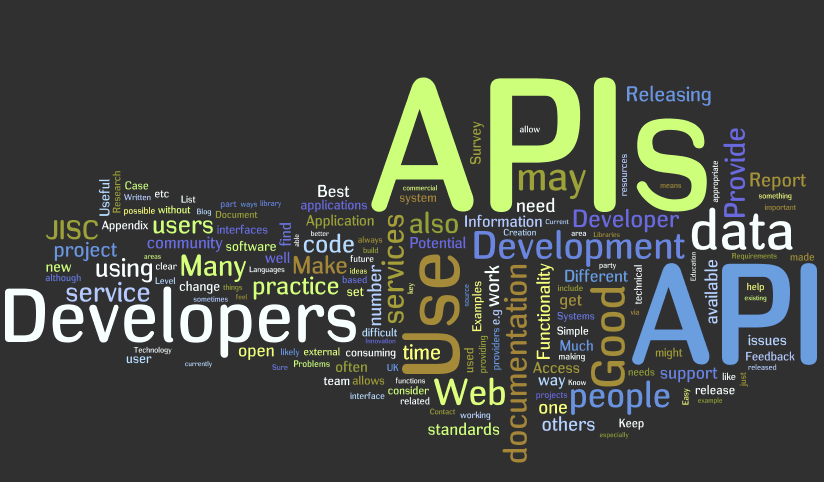Difference Between API and Integration
The widespread adoption of social media and the increasing use of smartphones have created a new breed of consumers who choose mobile devices as the way of interacting with the world. The world we live in, is constantly changing; it would be suffice to say, it’s evolving. We humans are evolving. Technologies such as mobile devices have changed the context, but more importantly changed the ways those interactions need to be planned, managed and monitored. For many years, businesses promoted the idea that you need to go from one tool to another to accomplish your development process needs. But with the rise of open source and the ever increasing complexity of language and architecture, it has become rather challenging for any single suite to support all of it.
The confluence of forces is changing the way businesses operate and to address these modern-day challenges in practice, businesses require further integration. Businesses now know they need to extend their markets into the digital world and expose internal data to the internet. This is where APIs come to the picture. Integration is not a new concept; in fact, it has been around for as long as the software was in the picture. On the contrary, APIs are a new concept but in a very short time, the technology has become mainstream. While the term API may mean different things to different people, their significance remains the same.
What is Application Programming Interface (API)?
API is the acronym for Application Programming Interface, which, as the name suggests, is a software-to-software interface that defines the contract for applications to talk to each other over a network without any user interaction. It is a code that allows software programs to communicate with each other. An API helps expose a business service or an enterprise asset to the developers building an application. An interface is a well-defined entry point into a system. For example, when you book a flight online from the app or from the website and make payment with your credit card, the flight booking portal sends your booking information to a payment processing application and the application then redirects you to the bank page to validate the credit card details and process the payment. After successfully processing the payment, the flight is booked for you. All this interaction between the flight booking portal to the payment application to the flight reservation system use APIs.
What is Point-to-Point Integration?
We live in a connected world now, where we create virtually countless bytes of data every day and we do so using several devices and applications. But in the business world, processing such huge volumes of data is crucial because they hold critical information about the business. Now, as corporate dependence on technology has grown more complex, the need for a more effective method of combining these disparate applications into a unified set of business processes has become the utmost priority. In effect, they are finding ways to bind these applications into a single, unified enterprise application using what is known as point-to-point integrations. But with the increasing complexity of IT landscape, the use of point-to-point integrations has become less imminent. This is where APIs come to the picture.
Difference between API and Integration
Meaning of API vs. Integration
While integration and APIs are two sides of the same coin, APIs are about more than just integration. An API is more like a code that allows software programs to communicate with each other and helps expose a business service or an enterprise asset to the developers building an application. It allows developers to build applications that can interface with the system or create new interfaces or applications on top of existing systems. Integration is just about facilitating interaction between two machines or systems over a network, whereas API acts as an interface between two applications.
Significance
While point-to-point integration provides the basic integration functionality, it has limitations that are relevant in more complex integration scenarios. It is fairly easy to manage when your IP department is small. However, it’s very difficult to manage hundreds of software systems integrated in a point-to-point manner. APIs, on the other hand, can be used to deploy global infrastructure. The growth of smartphones complemented the growth of digital technology, and APIs grew beyond powering ecommerce, social media, and the cloud.
Usage of API vs. Integration
The term API means different things to different people, depending on the context. There are APIs for operating system, there are APIs for applications, and there are APIs for the Web. An API specification can take many forms but with cloud computing, web APIs witness their real power. APIs moved from being uses as a social tool for social fun and interaction to a powerhouse of business integrations. A point-to-point integration is where one application depends on another specific application. Individual applications are directly integrated with one another in a point-to-point manner.
API vs. Integration: Comparison Chart
Summary of API and Integration
With the rise of open source and the ever increasing complexity of language and architecture, it has become rather challenging for any single suite to support all of it. While point-to-point integration provides the basic integration functionality, it has limitations that are relevant in more complex integration scenarios. This is where APIs come into play. APIs moved from being used as a social tool for social fun and interaction to a powerhouse of business integrations. Today, APIs can be used to deploy global infrastructure.
- Difference Between Caucus and Primary - June 18, 2024
- Difference Between PPO and POS - May 30, 2024
- Difference Between RFID and NFC - May 28, 2024
Search DifferenceBetween.net :
Leave a Response
References :
[0]De, Brajesh. API Management. New York: Apress, 2017. Print
[1]Bussler, Christoph. B2B Integration: Concepts and Architecture. Berlin, Germany: Springer, 2013. Print
[2]Heritage, Ian, et al. Integration Throughout and Beyond the Enterprise. Armonk, New York: IBM Redbooks, 2014. Print
[3]Image credit: https://commons.wikimedia.org/wiki/File:Apisssss.gif
[4]Image credit: https://www.maxpixel.net/Polaroid-Letters-Integration-Refugee-Migration-2489600



